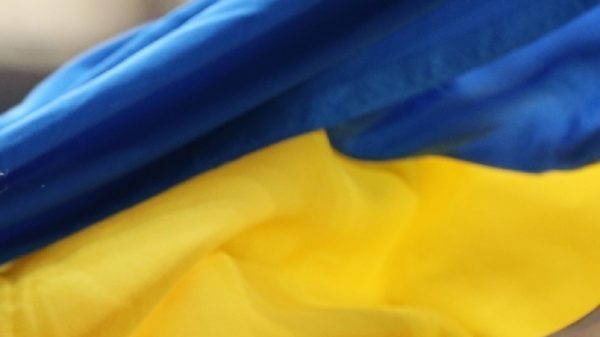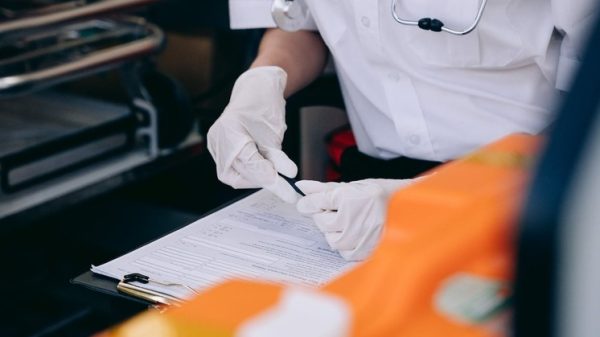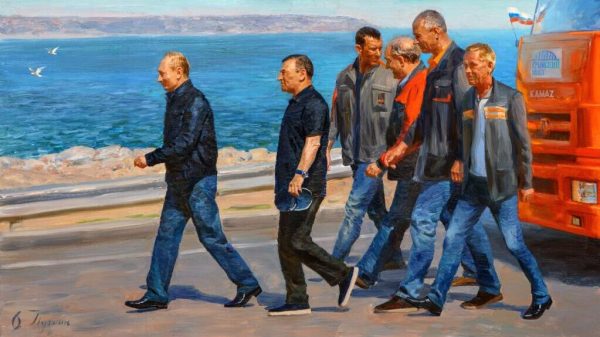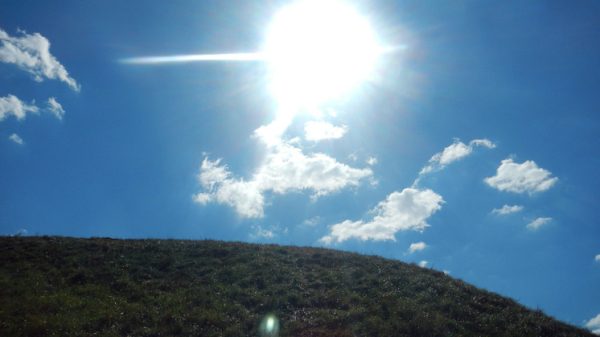
Patrick and John Collison have build a payments behemoth
Credit: Stripe
It’s a long way from Silicon Valley. With a population of just over 100, the sleepy Irish village of Dromineer is best known for its popular boating lake, Lough Derg, which is overlooked by the leafy ruins of a 13th century castle.
But for Patrick and John Collison, the 32 and 30-year-old founders of Internet payments giant Stripe, this was the unlikely spot where their extraordinary journey to riches began.
Already multi-billionaires, the brothers are on the verge of doubling their fortune as the company gears up for a funding round that could value the firm at $100bn. This weekend it emerged Stripe had appointed Mark Carney, former Bank of England Governor, to its board.
While most people may never have ever heard of Stripe, the chances are they have used its services dozens of times when making purchases online.
Stripe provides the back-end technology used to process internet payments for more than one million businesses. It is one of the fastest growing payments companies in a sector with annual revenues of $2tn (£1.42tn), according to McKinsey.
Patrick and John were last year worth at $4.3bn each, according to Bloomberg, in a deal valuing the company at $36bn. According to Forbes, the company was recently valued at $115bn in private transactions between investors. Bloomberg reported in November that Stripe has been in talks to raise new funding at a valuation of between $70bn and $100bn.
For the two brothers from Limerick, it’s been quite a tale.
“To say Dromineer is rural is understating it,” John said in a 2018 profile.
The pair grew up under their father Denis, an engineer, who ran a lakeside hotel, and microbiologist mother Lily. But it wasn’t long before it was obvious from their schoolwork that the duo were destined for somewhere beyond rural Tipperary.
When bored in class Patrick would read books. “I would line up the angles so I was hidden from the teacher’s view,” he said in a 2017 interview with Bloomberg. He apparently only found out years later that the school principal, aware of Patrick’s genius, had told his teachers to allow him to read.
John and Patrick Collison | The billionaire brothers behind Stripe
John, meanwhile, took to developing websites as a teen, following in the footsteps of his older brother. At one point the pair even tried to hack one another with Patrick hoping to teach John the importance of cyber security. John described their childhood as being like "free range kids" with plenty of latitude to find out what they were interested in.
To this day, both are immeasurably grateful to their parents for hearing their reasoning behind the decision to leave college and start Stripe, insisting that not all parents would have been so understanding.
By his mid-teens, Patrick was headed for the US.
At 16-years old he wowed judges at the BT Young Scientist Award held at the Royal Dublin Society when he demonstrated his own programming language.
Within a year he was whisked off to the prestigious Massachusetts Institute of Technology based on an SAT exam he took when he was 13.
A few years later he was followed by his younger brother John, who won a place to study at Harvard having received eight A1s in his Leaving Certificate — a set of exams used to determine what third-level institution students attend in Ireland.

Patrick Collison has spoken at length of growing the gross domestic product of the internet
Credit: Corbis News
At the time the teenager from Country Tipperary joked that Harvard had made a “terrible mistake with me”.
Despite attending two of the world’s finest universities, the pair opted to drop out in 2009 to prove that paying for products online did not have to be painful.
Their first enterprises were rejected for funding by the state-backed Enterprise Ireland. However, they attracted interest from Y Combinator, one of Silicon Valley’s best-known ‘accelerators’ where experienced entrepreneurs coach founders and connect them to investors.
Patrick and John first worked on a company called Auctomatic, which managed eBay accounts for high-level users. It was sold to Canadian firm Live Current Media for €3.2m in 2008 when they were aged just 19 and 17 respectively.
It wasn’t long before their business nous caught the attention of some of Silicon Valley’s biggest names.
In 2011 PayPal co-founders Peter Thiel and Elon Musk both invested into a little-known payments company called Stripe, headquartered in San Francisco. They were joined by Sequoia Capital, Andreesen Horowitz, and SV Angel — some of the best-known venture capital firms — in the $2m round. At the time, the company was believed to be valued at around $20m.
For Mike Moritz, a partner at Sequoia Capital and Stripe board member, the brothers had the advantage of coming to California “without being tainted and polluted by what’s in the water supply and air of Silicon Valley”. “They’re more humble and well-rounded,” he told Bloomberg last year.
“There’s such an improbability to their story—that these brothers from a little village would come to build what could well be one of the most important companies on the internet.”
Those who questioned Collison’s ability to grow Stripe in a world that already had PayPal have been proven wrong. Zoom, Slack, Wayfair, Amazon, and Deliveroo are among a host of businesses using the company to host their payments.
Stripe has also underpinned Waitrose’s move to its “Rapid” same-day delivery grocery service.
More than 100 million people in Europe made a purchase with Stripe last year, including more than half of all adults in the UK.
Much of Stripe’s success is down to how easy it is to use for merchants.
“Plug and play is really key. You don’t even know you are paying with Stripe,,” says Sarah Kocianski, the head of research at 11:FS.
While online payments have been around since the mid 1990s, the Collison brothers saw the process as overly complex. Systems such as PayPal dominated, but remained convoluted, says Kocianski. “PayPal, particularly in the early days, could be a bit of a pain.”
“It was technically feasible from the 1990s to accept credit card payments over the internet, but even as of 2010 it was extremely difficult,” said Collison on a 2016 podcast. “There was literal paperwork involved and weeks of delay.”
For the ex-governor Carney, Stripe’s potential is obvious.
“The very nature of commerce has changed over the past decade,” he said following his appointment to the board of the fintech. “Stripe has been at the forefront of enabling this new digital economy.”
Announced yesterday, I'm joining the board of @Stripe—a company helping to build the economic infrastructure of the internet, enabling #smallbusiness & firms of all sizes to create growth. Looking forward 2 being part of the team @patrickc @collisionhttps://t.co/llRIyqtr3A
— Mark Carney (@MarkJCarney) February 22, 2021
The appointment of Carney sits well with the Collison brothers’ own growth plans.
“As Stripe enters its second decade, Mark’s unparalleled experience of the highest levels of financial services and central banking will be of enormous benefit as we work to grow the GDP of the internet,” John Collison said over the weekend.
Stripe became a must for business across Europe to continue operating through the pandemic. More than 200,000 businesses in the bloc came online for the first time with Stripe since March, according to figures from the company. Those new businesses have generated more than $20bn in online revenue since taking on the fintech’s services.
UK-based life skills education company Role Models was among them. The company previously conducted nearly all of its classes in person before global lockdowns forced it online.
“I think in future, we’ll operate with a hybrid business model,” says Hugo Shephard, the Role Models chief executive.
“Many courses will be delivered in person but the success of the online programme, in terms of customer engagement and enabling us to reach new markets, means I’m sure we’ll keep some online elements permanently.”
Shephard praises Stripe for its “seamless” payments and refunds system.
To capitalise on the runaway success of Stripe, an initial public offering seems like the likely long-term option for the Collison brothers. Analysts have suggested any such listing would dwarf recent public bows like that of Airbnb and Uber, which were valued on their debut at $47bn and $82.4bn. By contrast, a listing of the fintech would likely eclipse $100bn.
But the brothers have insisted that no such plan is imminent. “We have no plan to IPO, which I realise might make us contrarian in Silicon Valley, given everything that’s going on,” John said in a media briefing in December.
“We’re still quite early in Stripe’s journey. And when I say that, you might roll your eyes, given that we’ve been at this for 10 years. But we’re still growing at quite a fast rate and still investing very heavily in future growth.”
The company is very much in the “helter skelter” expansion phase, he said.
According to multiple reports, it is in the process of raising $100bn in private markets. Secondary share sales, meanwhile, have valued it at $115bn.
If analysts and watchers are proven right, it is inevitable that the boys from Dromineer will become the toast of Wall Street.





















































Свежие комментарии